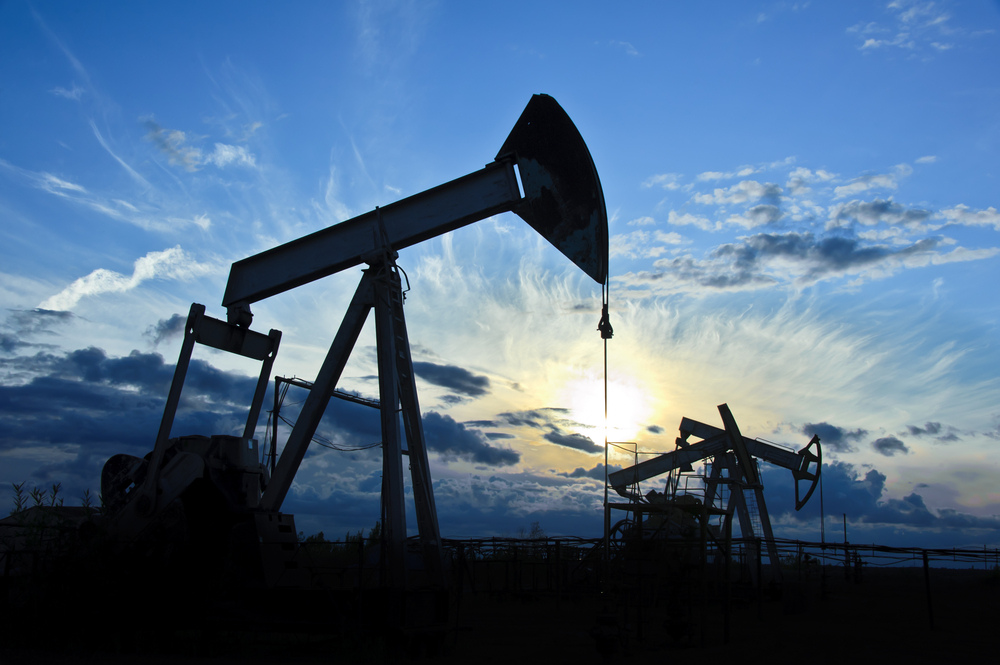By JOHN P. TRETBAR
Kansas Common crude at CHS in McPherson gained a quarter on Friday to start the week at $61.50 a barrel.
Independent Oil & Gas Service reported a nearly 15% drop in the number of active oil and gas drilling rigs across Kansas last week. Seven rigs statewide went from active status to “pending their next location assignment.” There were 13 active rigs east of Wichita, down two, and 28 in the western half of the state, which is down five for the week. The totals in Kansas are 14.6% lower than a week ago, nearly seven percent below the total from a month ago, but still nearly eight percent higher than a year ago at this time.
Operators report drilling underway at one site in Ellis County, they’re about to spud a new well in Barton County, and they’re moving in completions tools at two sites in Ellis County and one in Stafford County.
Kansas operators filed just 19 new drilling permits last week, 1,418 so far this year. There are 11 new permits in eastern Kansas and eight west of Wichita, including one in Barton County.
Out of 28 new well completions last week, nine were dry holes, including seven of the ten wells completed west of Wichita. Independent Oil and Gas Service reports three completions in Ellis County, with one dry hole. So far this year, operators across the state have completed 1,208 wells, compared to 1,006 at this time last year. By October of 2014 we reported more than 45,000 new completions.
The government said imports were down more than half a million barrels per day, but remain more than five percent higher than a year ago. EIA reported a 104,000-barrel increase in U.S. crude production last week to nearly 11.2 million barrels per day.
The government this week reported that gasoline inventories increased another million barrels last week, and are about seven percent above the average for this time of year. Triple-A reported the national average price for a gallon of regular was down slightly to $2.893, about two cents cheaper than a week ago, but four cents more than a month ago and 42-cents more expensive than a year ago. The average across Kansas Monday was $2.716. We spotted $2.64 at several outlets in Hays and $2.73 in Great Bend.
The U.S. Energy Information Administration reported the third consecutive weekly increase in domestic crude oil supplies. U.S. inventories were up six million barrels but are holding steady at the five-year average for this time of year.
Texas Attorney General Ken Paxton has joined a coalition of 11 state attorneys general to fight a climate-change lawsuit filed in Seattle against the energy industry. A friend-of-the-court brief asserts that King County, Washington’s objections to fossil fuel are based in public policy, not law, and are thus inappropriate for resolution in the courts.
As the sanctions deadline draws nearer, Iran appears to be dumping oil into storage in China, just as it did the last time around. Reuters reports a vessel carrying two million barrels from Iran off-loaded crude into a storage tank in northeastern China on Monday. Iran held oil in storage there during the last round of sanctions in 2014, and later sold it to to buyers in South Korea and India.
The Association of American Railroads reports another increase in US oil-by-rail for the week ending September 29: 12,140 rail cars, up 30.5% compared to a year ago. In Canada that number is up 34%. For the month of September, petroleum & petroleum products were up 14,750 carloads or 41.5 percent. AAR said the cumulative total so far this year was 423,085 carloads across the U.S. (10,848/week), an increase of 14.7% over last year at this time. That comparison in Canada is up 17.7%.
ConocoPhillips announced the first production from its first drill site within the National Petroleum Reserve-Alaska. The NPRA was created in 1923 as a petroleum reserve for the Navy, and lies about 100 miles west of the more controversial ANWR wilderness area. The company announced its first production at the Greater Mooses Tooth No. 1 drill site. Peak gross production is estimated at 25,000 to 30,000 barrels of oil per day. The site has a nearly 12-acre drilling pad with plans for anywhere from nine to 33 more wells.
The Federal Reserve Bank of Kansas City released its third quarter energy survey last week, reporting the highest energy drilling and business activity since early 2017. The report says total revenues and employee hours were slightly lower, as were employment, wages and benefits. Operators in Kansas, Oklahoma, northern New Mexico, Colorado, Wyoming and western Missouri were asked what oil and natural gas prices were needed for drilling to be profitable. The average reported oil price needed was $55 per barrel, with a range of $35 to $85.

